In 2025, headlines about rising urban pollution and health warnings are impossible to ignore. The air we breathe, both indoors and outdoors, is now a daily concern for families, businesses, and communities.
An air quality monitoring system is no longer just for scientists or large industries. These systems are now essential tools to protect health, ensure compliance, and improve daily life.
This guide will show you how to choose, install, and use an air quality monitoring system effectively. You will discover practical steps, expert tips, and the latest innovations shaping the future of clean air.
Understanding Air Quality and Its Impact in 2025
Air quality remains a top concern in 2025, as awareness of its effects on health and the environment continues to grow. The need for a reliable air quality monitoring system has never been greater, especially as new data highlights how pollution affects every aspect of our lives. This section breaks down what air quality means, recent trends, regulations, technology’s role, and who is most affected.
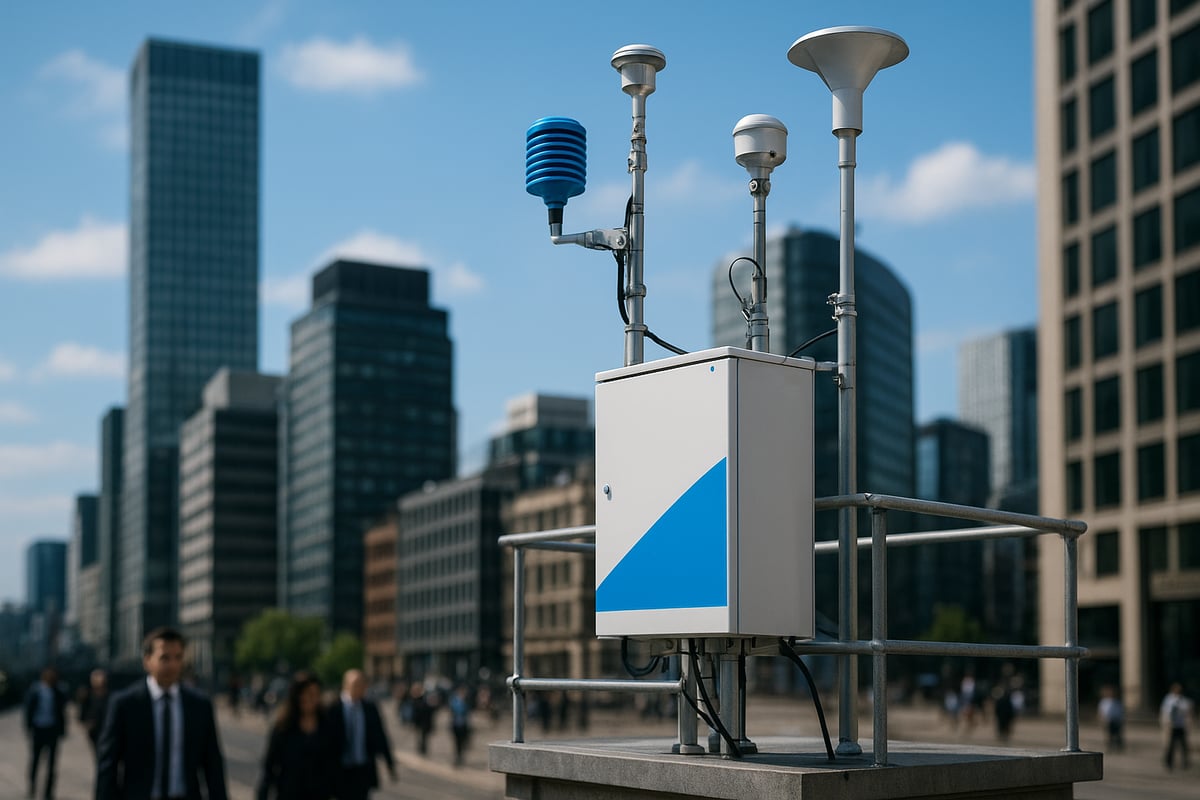
What is Air Quality and Why Does It Matter?
Air quality refers to the condition of the air in our surroundings, determined by the presence of pollutants. The most common pollutants measured by an air quality monitoring system include PM2.5, carbon dioxide, volatile organic compounds, nitrogen dioxide, and ozone.
| Pollutant | Main Source | Health Impact |
|---|---|---|
| PM2.5 | Traffic, industry | Asthma, heart disease |
| CO2 | Combustion, people | Fatigue, headaches |
| VOCs | Paints, cleaners | Irritation, cancer |
| NO2 | Vehicles, heating | Breathing problems |
| Ozone | Sunlight, traffic | Lung function decline |
Poor air quality can trigger asthma attacks, contribute to respiratory illnesses, and increase the risk of chronic diseases. The economic and societal costs are significant, with lost productivity and higher healthcare spending affecting communities and businesses alike.
Global and UK Air Quality Trends
Recent statistics from the World Health Organization and DEFRA reveal that air pollution remains a pressing issue both globally and in the UK. Urban areas continue to experience higher concentrations of pollutants compared to rural settings, and incidents such as smog episodes have led to temporary spikes in hospital admissions.
For a deeper dive into the latest patterns and innovations, the Air Quality Trends for 2025: Insights and Innovations report provides a comprehensive overview of how sensor technology and new research are shaping our understanding this year. These insights reinforce the value of an air quality monitoring system in tracking local changes and informing public health responses.
Regulatory Landscape and Compliance
The UK and EU have established strict regulations to safeguard air quality, with updates in 2025 introducing even tighter thresholds for key pollutants. Businesses, schools, and public institutions must now comply with these new standards, requiring regular data collection and transparent reporting.
Failure to meet these requirements can result in fines, reputational damage, and legal consequences. An air quality monitoring system helps organisations track compliance, providing the evidence needed for regulatory audits and ensuring safe environments for staff and visitors.
The Role of Technology in Air Quality Management
Modern technology has revolutionised how we monitor and respond to air pollution. With real-time data from an air quality monitoring system, organisations can react swiftly to rising pollutant levels, automatically adjust ventilation, and protect occupants.
Cities and businesses are leveraging smart systems that connect multiple sensors, enabling data-driven decisions. For example, schools use these systems to identify problem areas and implement targeted interventions, while office buildings optimise ventilation based on occupancy and air quality trends.
Key Stakeholders and Affected Environments
A robust air quality monitoring system delivers benefits across various settings. Schools, offices, healthcare facilities, and leisure spaces can all improve safety and comfort with accurate monitoring.
Children, the elderly, and those with pre-existing health conditions are especially vulnerable to poor air quality. By prioritising these groups, organisations can fulfil their duty of care and support healthier communities.
Types of Air Quality Monitoring Systems
Understanding the different types of air quality monitoring system is crucial for selecting the right approach in 2025. Each system type serves unique environments and needs, from static installations in buildings to portable solutions for spot checks. Let us explore the main categories and their key distinctions.
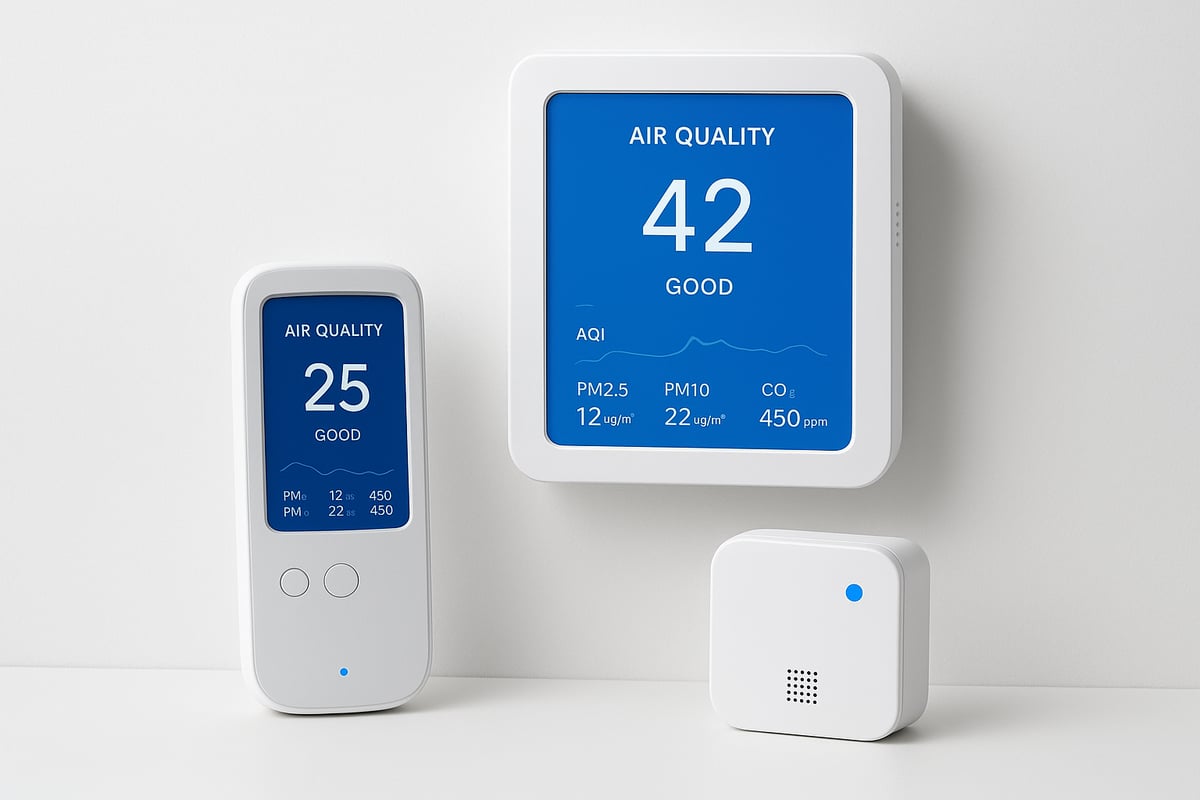
Fixed vs Portable Monitoring Systems
A fixed air quality monitoring system is permanently installed within a building or specific site. It continuously tracks pollutants, making it ideal for offices, schools, and healthcare settings that require ongoing surveillance. In contrast, portable systems are handheld or temporarily placed, offering flexibility for spot-checks or short-term events.
Fixed systems excel in providing long-term data, supporting compliance and proactive building management. Portable versions suit field inspections, maintenance checks, or temporary monitoring in changing conditions. However, fixed units offer better integration, while portable devices allow rapid deployment but may lack advanced features.
Indoor vs Outdoor Monitoring Solutions
Indoor air quality monitoring system solutions focus on pollutants like CO2, VOCs, and PM2.5, which are common in enclosed spaces. These systems use sensitive sensors tailored for lower pollutant concentrations and prioritise occupant health. Outdoor monitoring, on the other hand, measures a wider range of contaminants including ozone and nitrogen dioxide, often at higher levels.
Deployment also differs. Indoor monitors are typically smaller and placed in strategic locations such as meeting rooms or classrooms. Outdoor systems are robust, weatherproof, and installed on rooftops or street poles, forming networks across neighbourhoods or cities. Each context demands unique technical specifications and sensor calibration.
Networked and IoT-Enabled Systems
Modern air quality monitoring system technology now leverages IoT connectivity for real-time data sharing and advanced analytics. These networked systems send information to cloud platforms, enabling instant alerts and remote management. Smart cities increasingly adopt such solutions to monitor pollution across large urban areas.
Security and privacy are important, as data is transmitted and stored digitally. Interconnected sensors allow for trend analysis, predictive maintenance, and integration with other smart building systems. To understand the role of smart sensors and IoT in these solutions, visit the Smart sensor technology overview.
Advanced Features: Beyond Basic Detection
Today’s air quality monitoring system goes far beyond simple detection. Advanced models can measure multiple gases, analyse particulate size, and track humidity and temperature. Many offer real-time alerts, triggering automated ventilation or purification systems when thresholds are exceeded.
Integration with building management platforms is becoming standard, allowing seamless control over HVAC and safety protocols. These features support a healthier indoor environment, ensure compliance, and provide actionable insights for facility managers and occupants alike.
Cost Considerations and ROI
Investing in an air quality monitoring system involves both upfront and ongoing costs. Initial expenses cover hardware, installation, and configuration. Regular maintenance, calibration, and software updates form the recurring costs.
However, these investments often lead to savings by reducing health-related absences, improving productivity, and ensuring regulatory compliance. Over time, the return on investment becomes clear, especially when considering the societal and economic costs of poor air quality.
Essential Features of a Modern Air Quality Monitoring System
Selecting the right air quality monitoring system is more than a box ticking exercise. The features you choose will define not just compliance, but the health, safety, and productivity of everyone in your environment. Let us examine the essential capabilities that every modern air quality monitoring system must deliver in 2025.
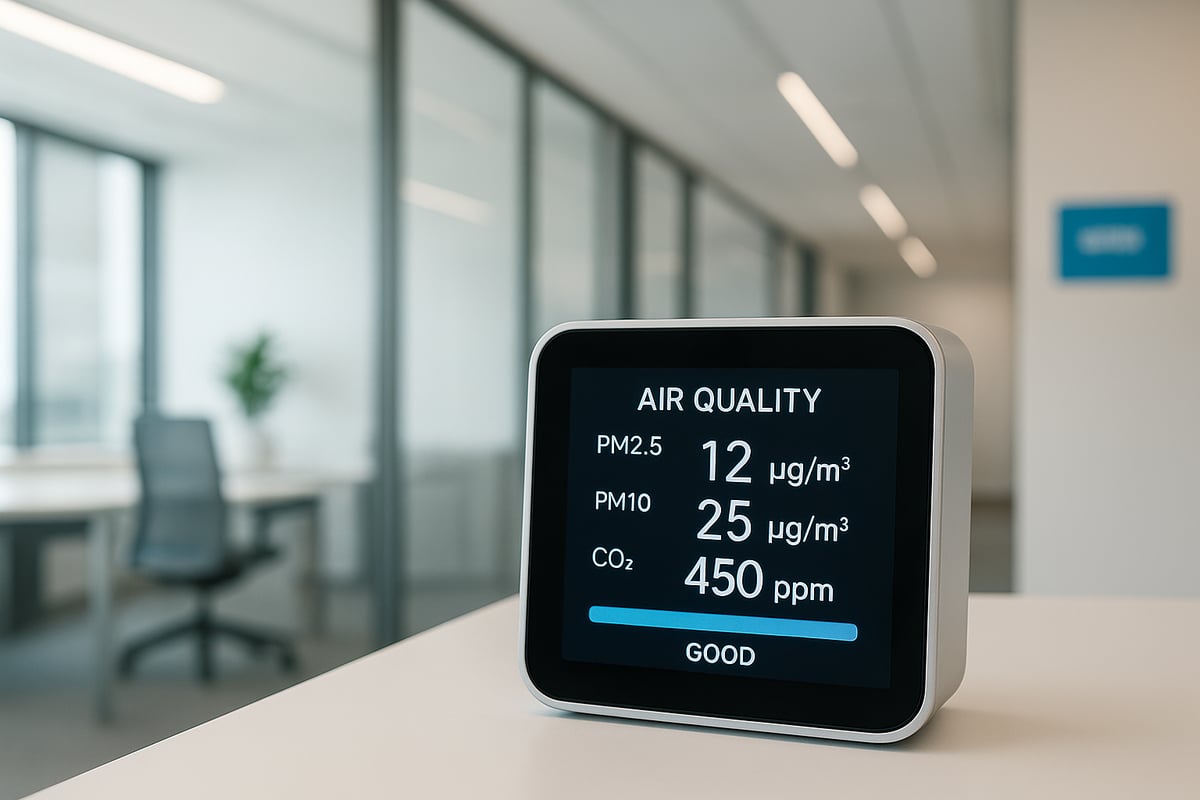
Sensor Accuracy and Reliability
Accuracy is the backbone of any air quality monitoring system. Reliable readings depend on high quality sensors that are properly calibrated and maintained. Modern systems often use electrochemical, optical, or metal oxide sensors. Each type has strengths, such as electrochemical sensors for gases or optical sensors for particulates.
Regular calibration ensures precision and minimises drift over time. For instance, a well maintained air quality monitoring system can achieve accuracy within 5 percent of reference standards.
If you want a deeper dive into sensor technology and how it impacts reliability, the Indoor air quality sensors guide offers valuable insights.
Data Collection and Real Time Reporting
A robust air quality monitoring system collects, stores, and transmits data seamlessly. Real time monitoring is critical for identifying issues as they happen. Modern systems use secure wireless connectivity to send data to cloud platforms, making it accessible anywhere.
Immediate alerts allow rapid intervention. For example, schools can respond to sudden increases in CO2 or particulate matter, protecting students and staff. Data retention options help with compliance and trend analysis, building a historical record for audit purposes.
User Interface and Data Visualisation
A modern air quality monitoring system must offer a user friendly interface. Dashboards, mobile apps, and visual displays make it easy to interpret complex data at a glance. Customisation allows different user groups to focus on relevant metrics, such as facilities teams monitoring CO2 or executives tracking overall trends.
Visualisation tools turn raw data into actionable insights. Colour coded graphs, live maps, and threshold alerts empower users to make informed decisions quickly.
Integration with Other Safety Systems
Interoperability is essential for a future proof air quality monitoring system. Integration with HVAC, alarms, and compliance reporting tools enables automated responses to poor air quality. For example, when CO2 levels rise, the system can trigger ventilation or notify building management.
Such connectivity ensures a holistic approach to safety, reducing manual intervention and ensuring a swift response to any threat.
Maintenance, Support, and Scalability
Ongoing performance depends on regular calibration, maintenance, and updates. A scalable air quality monitoring system can grow as your organisation expands, supporting multiple sites and new features.
Vendor support and clear service level agreements are vital for long term reliability. Proactive maintenance schedules and responsive technical support keep the system operating at peak efficiency, protecting both health and investment.
Step-by-Step Guide to Implementing an Air Quality Monitoring System
Implementing an air quality monitoring system requires careful planning, precise execution, and ongoing management. By following a structured approach, organisations can ensure accurate results, regulatory compliance, and real improvements in indoor environments. This guide walks through each essential step, offering practical advice for a successful implementation.

Assessing Your Needs and Setting Objectives
The foundation of any effective air quality monitoring system project is a clear assessment of needs and objectives. Begin by identifying what you want to achieve, such as regulatory compliance, improved health outcomes, higher productivity, or enhanced reputation.
Evaluate specific risks in your environment. Are there high occupancy areas, vulnerable groups, or known sources of pollution? For example, schools may prioritise classrooms and gyms, while offices focus on meeting rooms.
- List all spaces to be monitored
- Identify key pollutants of concern
- Set measurable goals for improvement
Defining these factors ensures your air quality monitoring system is tailored to your environment and delivers meaningful results.
Selecting the Right System and Vendor
Choosing the right air quality monitoring system and vendor is crucial for long term success. Consider criteria such as sensor accuracy, system features, integration capabilities, cost, and support services.
Compare available solutions carefully. Look for systems that offer reliable data, user friendly interfaces, and strong after sales support. Vendor reputation and service agreements can make a significant difference in ongoing satisfaction.
- Evaluate system scalability for future needs
- Review compliance with relevant standards
- Assess total cost of ownership, including maintenance
Selecting a trusted partner ensures your air quality monitoring system remains effective and adaptable as organisational needs evolve.
Planning the Deployment
A well planned deployment maximises the effectiveness of your air quality monitoring system. Conduct a site survey to map out optimal sensor locations based on building layout, airflow patterns, and occupancy.
Create a detailed deployment plan:
- Identify high risk or high traffic zones
- Determine sensor density per area
- Plan for minimal disruption during installation
For multi storey offices, ensure coverage on each floor and in shared spaces. A thoughtful plan supports accurate data collection and helps you address any unique challenges in your environment.
Installation and Initial Setup
Once planning is complete, proceed with the installation of your air quality monitoring system. Follow a step by step process to ensure accuracy and reliability.
- Mount sensors according to the deployment map
- Connect devices to power and data networks
- Calibrate sensors to establish baseline readings
Collect initial data to verify system performance. Strive for minimal disruption to daily operations by scheduling work during off peak hours or after business hours.
Staff Training and User Onboarding
Training staff is essential for effective use of any air quality monitoring system. Provide clear instructions on interpreting data, responding to alerts, and maintaining equipment.
Develop response protocols for different scenarios. For instance, staff should know what actions to take if pollutants exceed safe levels in a classroom or meeting room. For more practical advice, see Office air quality monitoring tips.
- Schedule hands on training sessions
- Offer reference guides or digital resources
- Encourage questions and feedback
Well trained users are more confident and proactive in improving air quality.
Data Management and Privacy Compliance
Managing data responsibly is a core element of any air quality monitoring system. Ensure compliance with GDPR and UK data protection regulations.
Implement secure data storage and access controls. Define clear policies for data retention, sharing, and reporting to stakeholders.
- Restrict access to authorised personnel only
- Regularly review and update privacy protocols
- Document all data management procedures
By prioritising privacy, organisations gain trust and maintain regulatory compliance.
Ongoing Maintenance and Performance Optimisation
Sustaining the performance of your air quality monitoring system requires regular maintenance and optimisation. Schedule periodic sensor checks and recalibration to maintain accuracy.
Keep system software up to date with the latest enhancements. Monitor performance data to identify areas for improvement or additional training needs.
- Log maintenance activities for accountability
- Review system alerts and response times
- Adjust deployment as organisational needs change
Continuous improvement ensures your air quality monitoring system remains effective and reliable over time.
Evaluating Success and Reporting Outcomes
The final step is to evaluate the success of your air quality monitoring system. Set clear KPIs such as reduced pollutant levels, improved occupant satisfaction, or compliance rates.
Collect and analyse data to assess impact. Share results with stakeholders through clear, visual reports. Use findings to adjust strategies and inform future decisions.
- Measure progress against initial objectives
- Report outcomes to regulatory bodies as required
- Celebrate successes and identify areas for further action
Regular evaluation keeps your air quality monitoring system aligned with organisational goals and regulatory requirements.
Analysing and Leveraging Air Quality Data
Understanding and using air quality data is vital for optimising environments and protecting health. A modern air quality monitoring system generates detailed data, but its real value comes from thoughtful analysis and effective action.
Interpreting Key Air Quality Metrics
Every air quality monitoring system provides a range of metrics, such as AQI, PM2.5 and PM10, CO2, and VOCs. Understanding these indicators allows you to assess risks and take timely action. For instance, PM2.5 levels are linked to respiratory health and are especially important in urban areas. Learning how to interpret PM2.5 data is crucial, and resources like PM2.5 air quality reports explained can help you understand what these numbers mean for your environment.
Common thresholds for action are set by health authorities. For example, AQI values above 100 may trigger alerts, while CO2 levels above 1000 ppm suggest the need for improved ventilation. Monitoring these figures helps you respond before problems escalate.
| Metric | Typical Action Threshold |
|---|---|
| AQI | 100 |
| PM2.5 | 35 µg/m³ |
| CO2 | 1000 ppm |
| VOCs | 0.5 ppm |
Using Data for Proactive Risk Management
An air quality monitoring system does more than just report numbers. It empowers you to spot trends, identify recurring issues, and prevent problems before they affect health or productivity. Analysing data over time helps you see patterns, such as daily spikes in CO2 during meetings or increased PM2.5 after cleaning.
Predictive analytics can be used to adjust schedules for ventilation or cleaning based on expected air quality changes. For example, if data shows high PM2.5 every Monday morning, cleaning routines or ventilation adjustments can be made proactively. This approach reduces risks and supports a healthier indoor environment.
A well-implemented air quality monitoring system enables facilities managers to move from reactive to proactive risk management, saving time and resources.
Integrating Air Quality Data into Broader Environmental Strategies
Integrating air quality insights into your wider sustainability initiatives is essential for organisations aiming for ESG compliance and green building certifications. Data from your air quality monitoring system can be linked to energy efficiency efforts, such as optimising HVAC operation for both comfort and reduced carbon footprint.
Many businesses use these insights to benchmark progress, share achievements in sustainability reports, or pursue certifications like WELL or BREEAM. For example, an office building that uses air quality data to maintain healthy indoor environments may achieve WELL certification, proving a commitment to occupant wellbeing.
By leveraging your air quality monitoring system in this way, you align health and sustainability goals, enhancing your organisation’s reputation and compliance.
Communicating Findings to Stakeholders
Transparent communication is key to building trust and encouraging behavioural change. Use your air quality monitoring system’s dashboards and visualisation tools to present data in a clear, accessible format. Sharing regular reports with staff, parents, or the public helps everyone understand the importance of air quality.
Best practices include using visual cues, like traffic-light colour codes, and providing context for the numbers. For example, a spike in CO2 can be explained alongside suggested actions, such as opening windows or reducing occupancy.
Consistent communication ensures that everyone knows how to respond to alerts, making your air quality monitoring system an integral part of your organisation’s safety culture.
The Future of Air Quality Monitoring: Trends and Innovations for 2025
The future of air quality monitoring system technology is evolving rapidly, driven by innovation and the urgent need for cleaner environments. In 2025, organisations and governments are embracing smarter approaches to monitor, analyse, and improve air quality. Let us explore the key trends that will define the next era of air quality monitoring.
Emerging Technologies and Smart Solutions
Artificial intelligence and machine learning are revolutionising the air quality monitoring system landscape. These technologies enable predictive analytics, helping facility managers anticipate and address air quality issues before they escalate. Wireless sensor networks are becoming more prevalent, offering real time data from multiple locations and seamless integration with building management platforms.
Miniaturisation of sensors means that monitoring can now be embedded within everyday objects, making air quality tracking more accessible. Several UK cities are piloting smart city initiatives that rely on interconnected monitoring devices and cloud based dashboards. To learn more about these advancements, see Future of Air Quality Monitoring – Trends and Predictions for 2025.
Policy Changes and Evolving Standards
Regulatory frameworks for air quality monitoring system deployment are tightening in the UK and across Europe. In 2025, new standards will require more comprehensive data collection, reporting, and transparency from both public and private sectors. These changes are influenced by recent health studies linking air pollution to chronic illnesses and productivity losses.
Businesses must stay ahead by adopting systems that not only meet current compliance but are also adaptable to future requirements. The market is seeing a shift towards solutions that simplify regulatory reporting and automate compliance checks, reducing administrative burdens.
Towards Healthier, More Sustainable Environments
A modern air quality monitoring system plays a vital role in supporting net zero targets and sustainable building certifications. By providing continuous feedback, these systems empower organisations to reduce energy consumption, optimise ventilation, and create safer spaces for occupants.
Collaboration among government, industry, and local communities is accelerating the shift towards real time air quality awareness. The vision for 2025 is clear: environments where every stakeholder can access accurate air quality data, driving collective action for a healthier and more resilient future.
As we’ve explored, understanding and improving air quality is no longer just a nice-to-have—it’s essential for protecting the wellbeing of everyone in your space, whether it’s a school, office, or leisure facility. Real-time monitoring, smart alerts, and actionable data can make all the difference in reducing health risks and meeting compliance goals. If you’re ready to take the next step in safeguarding your environment and want expert guidance tailored to your needs, you can talk to our team and protect your building today. Let’s create safer, healthier spaces together.

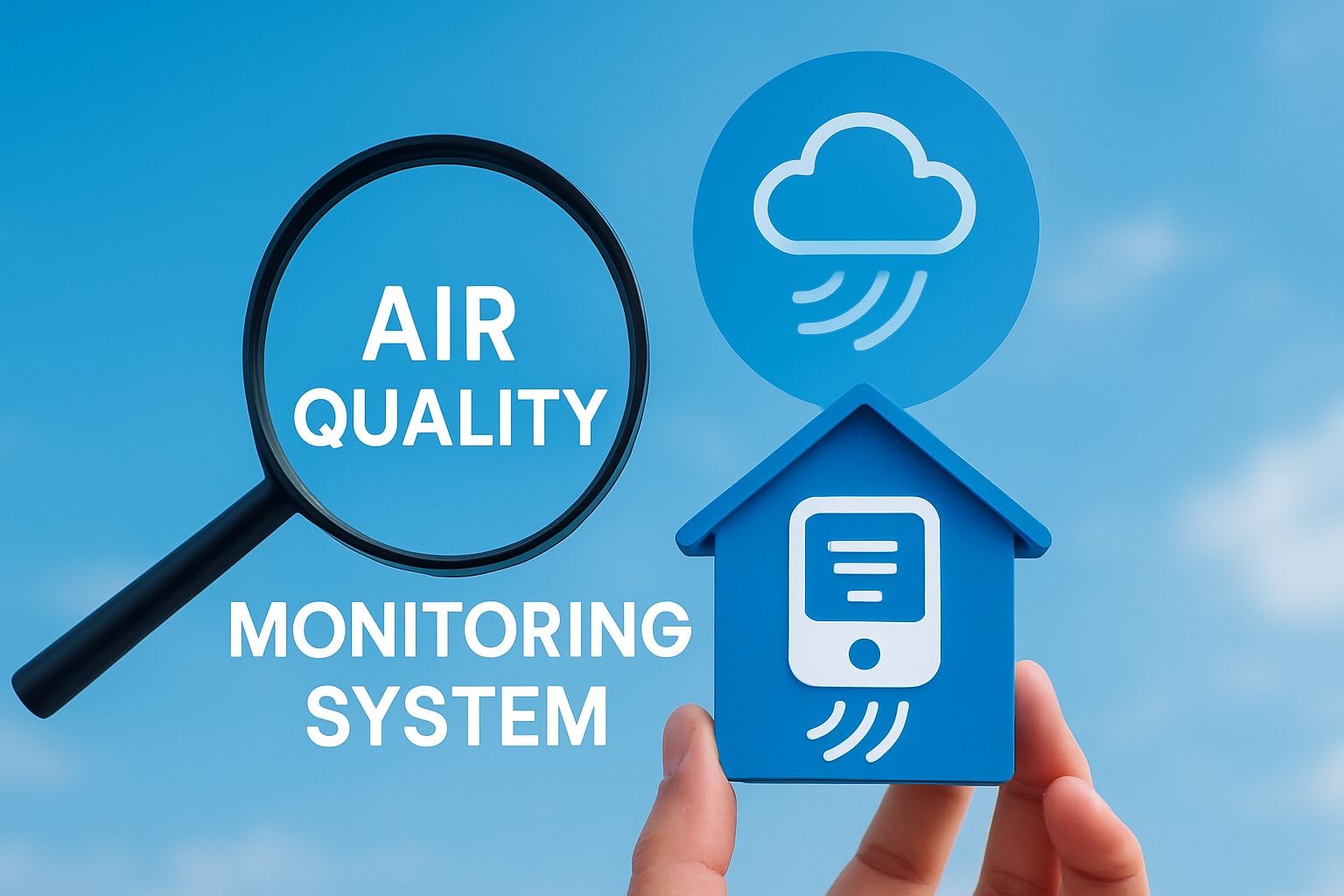
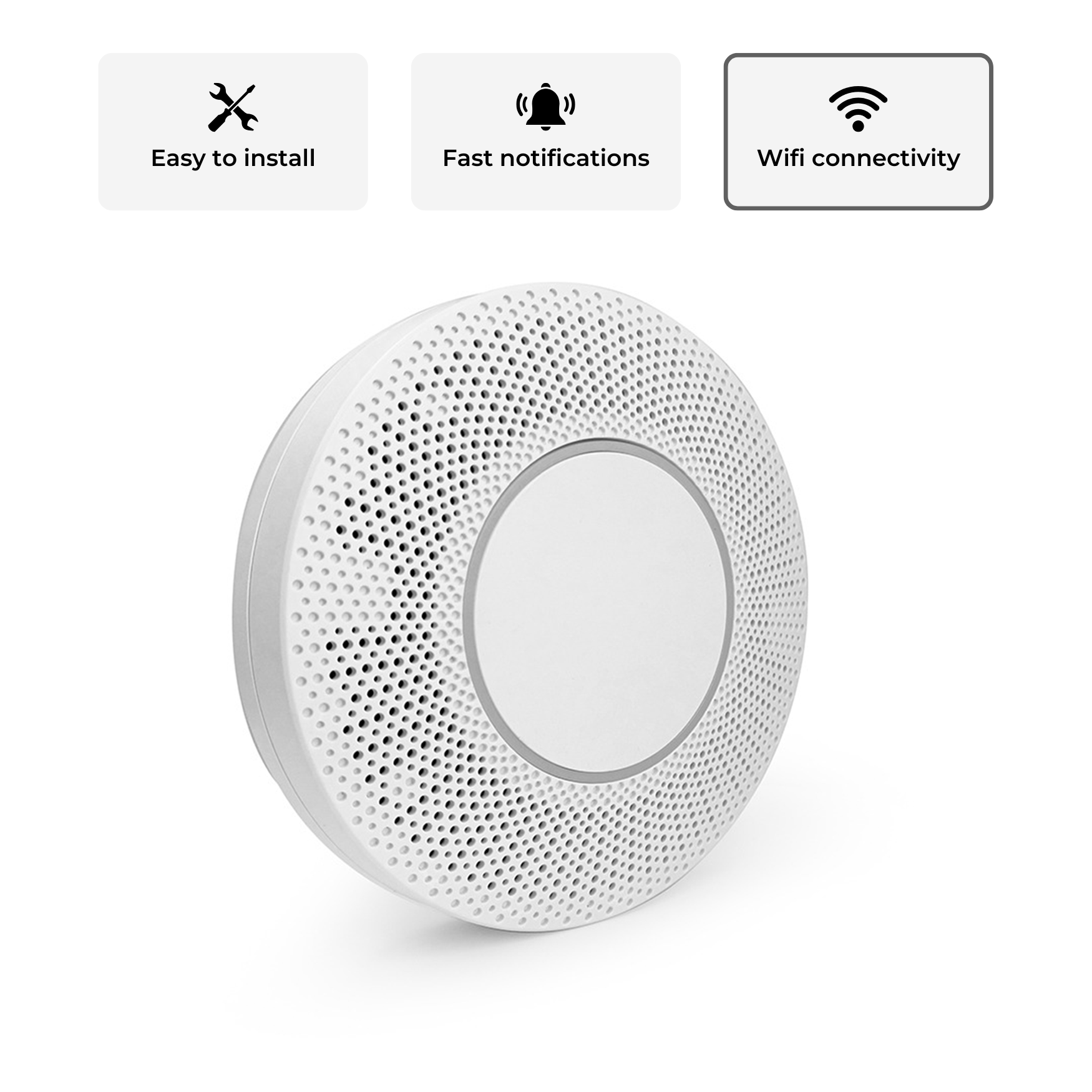
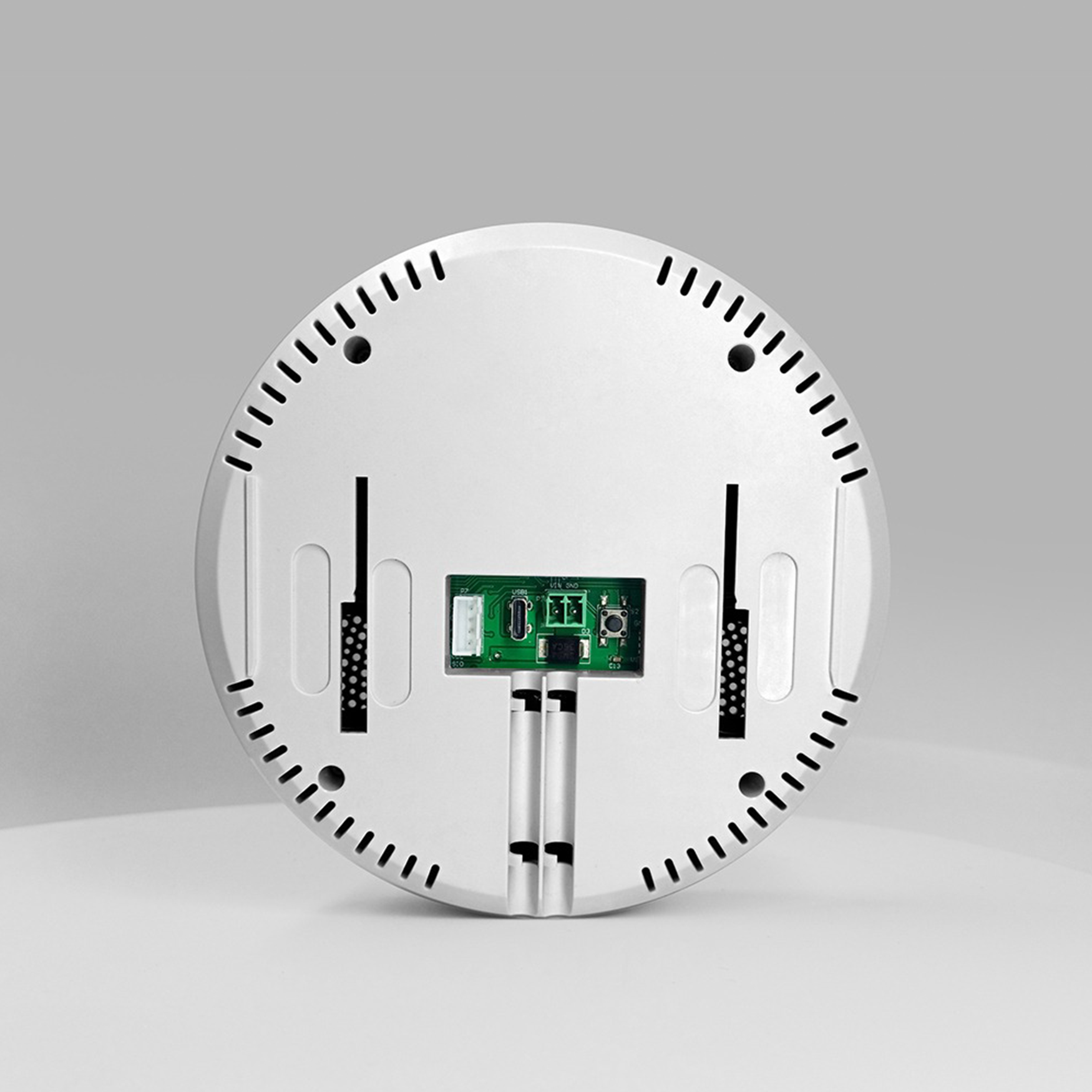

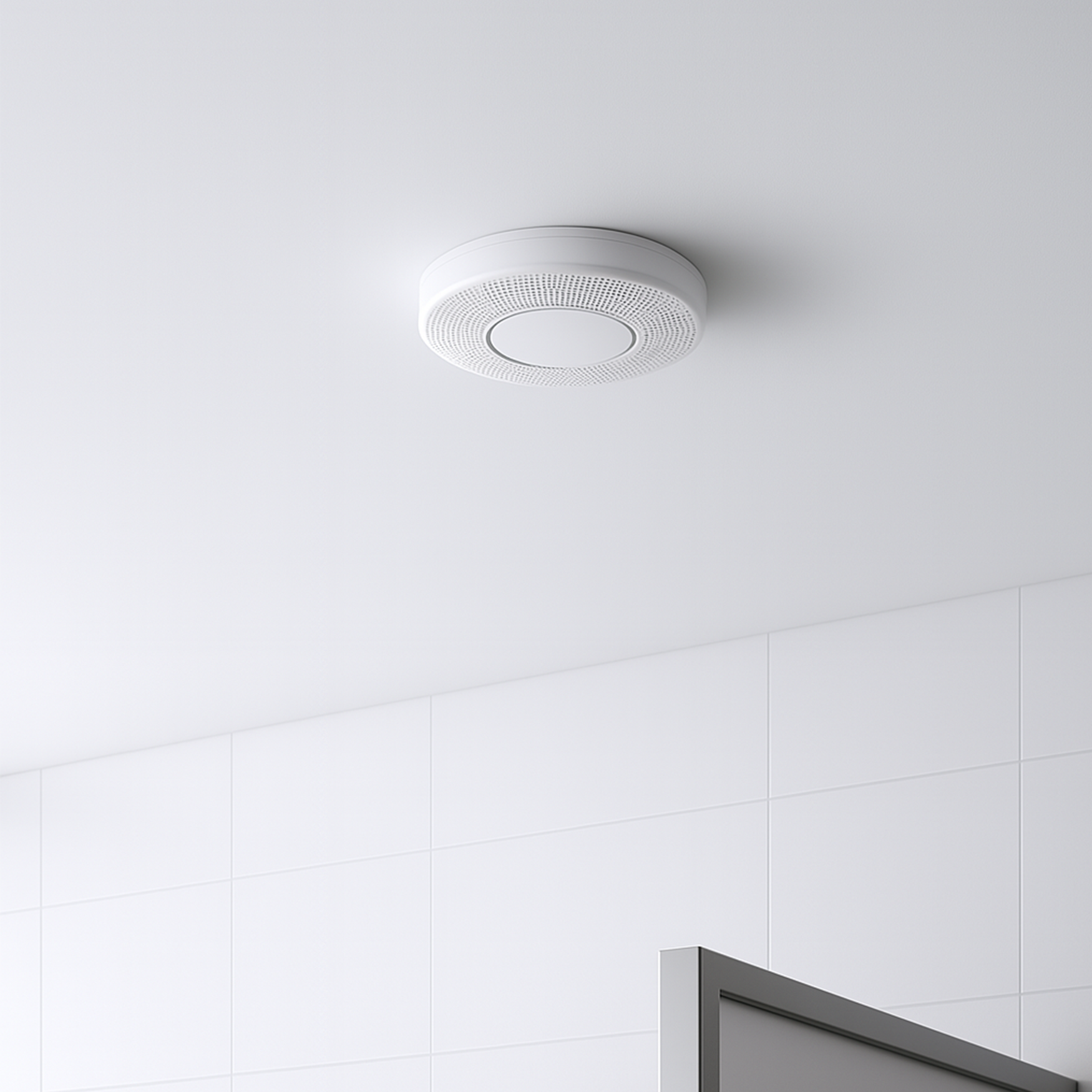
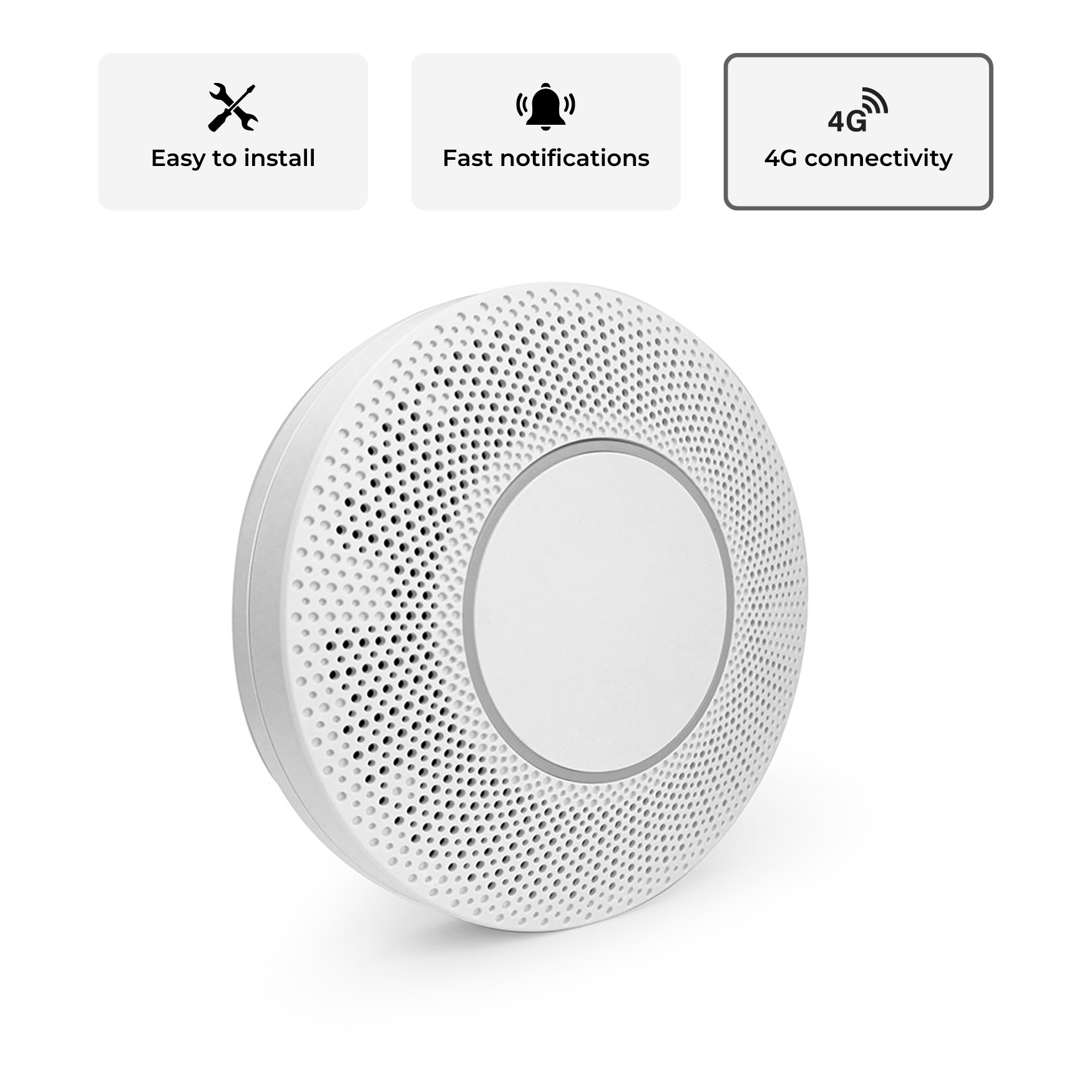
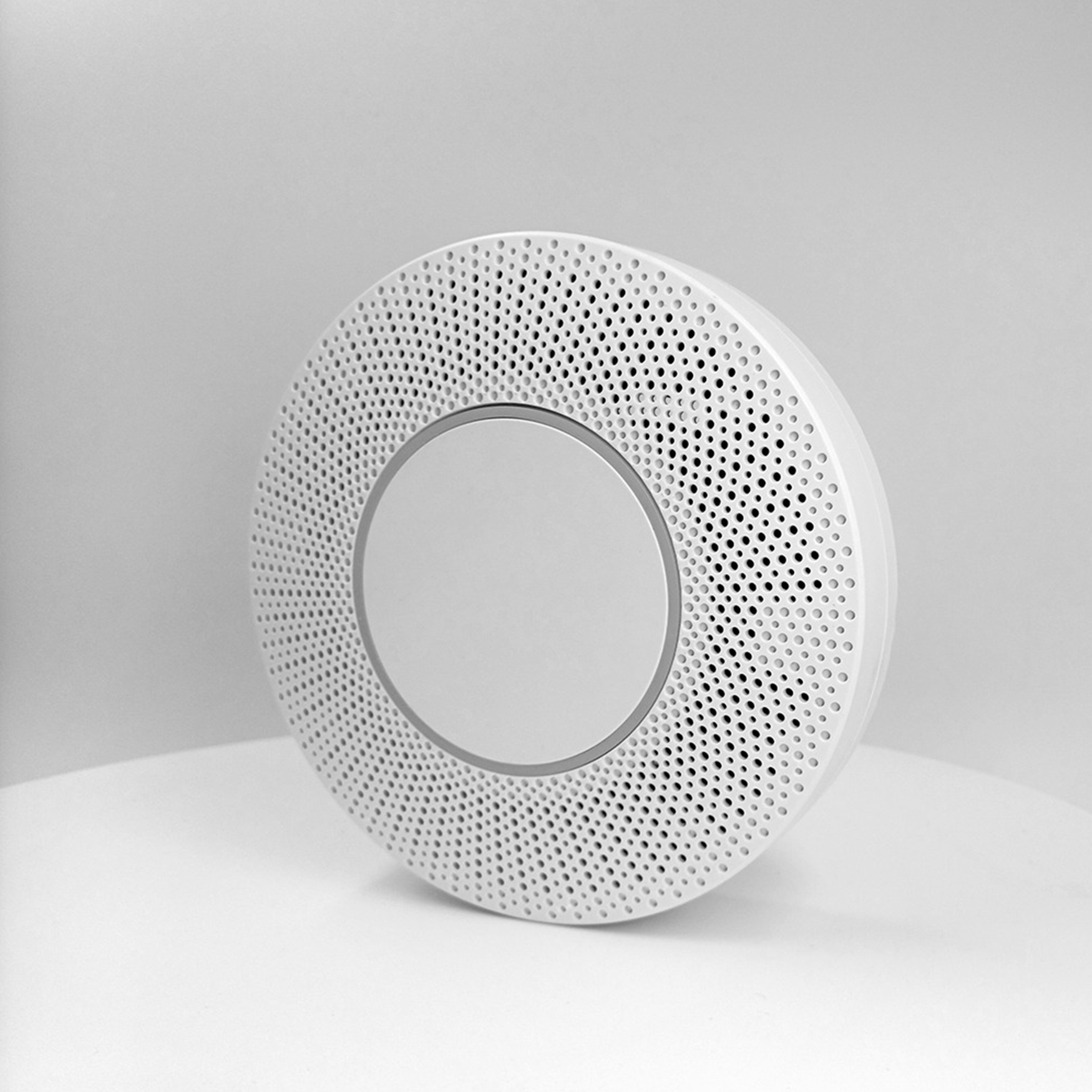
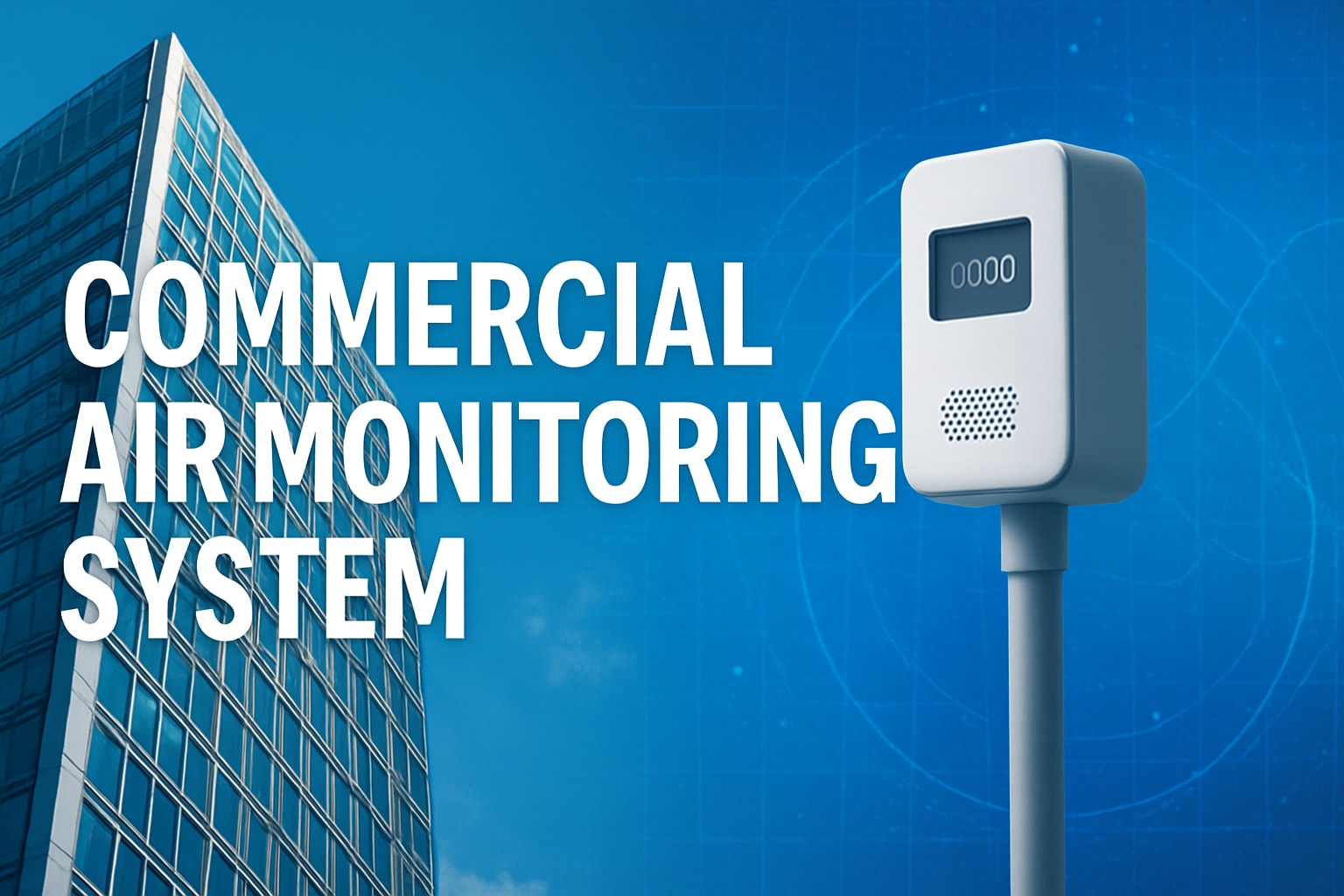


Share:
Vapor Device Guide 2025: Your Essential Handbook
Tobacco Smoke Detector Guide: Your 2025 Step-by-Step Handbook